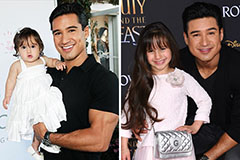Achieving business success isn't solely about your skills and expertise. First perceptions matter, and the way you attire yourself plays a vital role. Dressing for success means choosing apparel that convey confidence, professionalism, and capability. It's about communicating your optimal self to the world.
- Start with a strong foundation: A well-tailored suit or dress, in a classic color like navy, gray, or black, is a essential piece that can be dressed up or down.
- Consider attention to finishes: Accessories like a tie, a statement watch, and well-chosen shoes can elevate your ensemble.
- Belief is key: No matter what you wear, carry yourself with dignity. A confident attitude will always shine through.
Apparel: A Showcase of Identity
Fashion is more than just garments ; it's a powerful medium that allows us to convey our beliefs to the world. Our decisions in dress can hint at our feelings , background .
A bold outfit can signal confidence and creativity , while a classic look might imply a need for elegance . Ultimately, our fashion sense is a personal reflection of who we are and how we choose to be seen by others.
Delving into Different Dress Styles
Fashion is a dynamic and fluctuating world that offers a vast array of dress styles to suit every personality and occasion. From the classic elegance of a little black dress to the audacious trends of modern streetwear, there's something for everyone. Discovering different dress styles can be an thrilling journey that enables you to express your individuality and cultivate your personal style. Whether you gravitate towards formal attire or more relaxed ensembles, the key is to identify what makes you feel confident.
- Try with different silhouettes and fabrics.
- Embrace colors and patterns that speak to your personality.
- Keep up-to-date on the latest fashion trends, but resist being influenced by them completely.
Tracing the Evolution of Fashion
Fashion is a reflection to society, constantly shifting over time. From the elaborate costumes of ancient civilizations to the trendsetting designs of today, each era has left its distinct mark on the world of clothing.
In the early world, people wore a necessity for protection from the elements. However, even then, there were signs of fashion consciousness. In ancient Egypt, intricate jewelry and headwear were common, while in Rome, tunics became a symbol of social status.
The Middle Ages saw the growth of different styles depending on one's role. Soldiers donned armor for battle, while ladies wore elegant attire with intricate embroidery and embellishments. During the Renaissance, a renewed interest in classical culture led to graceful clothing with emphasis on symmetry and proportion.
The centuries that followed brought about dramatic changes in fashion. The Victorian Era saw the rise of new fabrics, innovations in sewing, and a growing focus on comfort and practicality. Today, fashion is a worldwide phenomenon, with designers experimenting and creating trends that are constantly evolving.
The Psychology Behind Clothing Choices
Our decisions regarding clothing extend far beyond mere practicality. They delve into a complex realm of behavioral patterns, reflecting our personality and influencing how we regard ourselves and the world around us. Clothing acts as a powerful form of self-expression, allowing us to display our emotions, desires, and even our group affiliations.
- For instance
- Sporting bright colors can suggest confidence and enthusiasm, while darker hues might express a sense of mystery.
- Additionally, the design we select can indicate our preferences and even our status within society.
Sustainable Fashion and Ethical Production
The growing demand for fashion continues to drive a urge for more ethical practices throughout the industry. This means adopting eco-friendly materials and production processes, as well as ensuring just treatment of employees involved in the supply check here chain. From material sourcing to manufacturing and transportation, each step plays a crucial role in creating a truly responsible fashion industry. Consumers are becoming increasingly aware of these issues, choosing brands that match with their values.
By supporting sustainable fashion and ethical production, we can mitigate the planetary impact of the fashion industry and create a more fair future for all.
 Jonathan Taylor Thomas Then & Now!
Jonathan Taylor Thomas Then & Now! Katie Holmes Then & Now!
Katie Holmes Then & Now! Gia Lopez Then & Now!
Gia Lopez Then & Now! Elisabeth Shue Then & Now!
Elisabeth Shue Then & Now! Meadow Walker Then & Now!
Meadow Walker Then & Now!